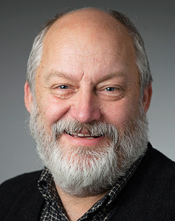 By Anders Norberg (Education Strategist, Campus Skellefteå, Sweden )
By Anders Norberg (Education Strategist, Campus Skellefteå, Sweden )
Imagine yourself as a teacher with virtually no media in a face-to-face teaching environment in an isolated part of the world. You have 30 students who are going to learn x. You have them all under a tree. You have nothing but your knowledge and your students—no Internet, no library, no video, no cell phones, no books, no paper, no chalk board. What can you do? Ask them about their experiences with the subject? Start discussions? Tell them things? Probably. Not easy, but clean in some ways. If they only knew what you know. What else can you do in this situation except tell them what you know in a kind of transfer-of-knowledge project? If you had only one book, you would probably read aloud now and then (like professors in early medieval universities). But sometimes you feel that you would rather tell them things in your own words (in medieval universities the lecture, “lectio,” was born this way, often followed by “disputatio,” discussion).
Suddenly someone brings in paper and pencils for all. What a relief. Now things go a little more smoothly. Students can take notes. Would you mind if they take notes word-for-word when you give a lecture? (Medieval professors didn’t like it at all—the student could then sell the notes or, worse, lecture himself. Students who tried were thrown out for a year.). But, more importantly, students could be given more advanced assignments. They could formulate ideas and questions together. They could be given homework. They could write texts themselves. They could create.
Then suddenly textbooks arrive for everyone. Fantastic. (Like in universities in late medieval times, when printed material became available for students). Now you don’t have to tell them everything because they can read for themselves under your guidance, under the tree and at home, individually and together. And in combination with the pencils and the paper, the possibilities multiply. You can concentrate the time under the tree on questions and problems, correcting misunderstandings, stimulating discussions, enabling applications, developing criticism. You might even organize a distance course.
Now, would you still keep talking all day and telling the students everything just in case they can’t read or do not understand the book, or because they say that it is dull to read? Do you tell them what’s important in the book instead? Or do you explain the content so they can read more easily later? How do you design the blend between oral lecture culture, books, and writing possibilities? What is effective and what works?
But what if those books were going to replace you in a longer perspective? (“Lectures were once useful; but now, when all can read, and books are so numerous, lectures are unnecessary,” attributed to Samuel Johnson according to Boswell.) But in retrospect we know that the teacher’s role survived the book. Some teachers succeeded by integrating the book, some by adding it.
And then along come film, radio lectures, video…and Internet access with an abundance of tools and communication possibilities. What is possible then? How can it all blend into your teaching? And in a student’s learning? When is new technology so integrated that we don’t need the “blending”/ “hybrid”/ “mixed-mode” metaphors any longer? Or does it all end with a lot of media and no teacher?
For every media enhancement, there is a blending possibility. Some institutions and teachers use it for the same basic course concept. Others use it for real change, in some sense, seeking the future of education. These are the blenders that I would propose. Things can change, become better and more effective, offering more freedom and options to both teachers and students. More responsibility for learning can be shifted to students with more asynchronous media. The teacher’s job becomes different but not necessarily easier. The freedom for students to learn in their own way increases. Some students do not have to sit in school all day. They do asynchronous work with help of media instead of synchronous attendance. More freedom, more possibilities, more responsibility—for all? And what is adding and what is blending?




